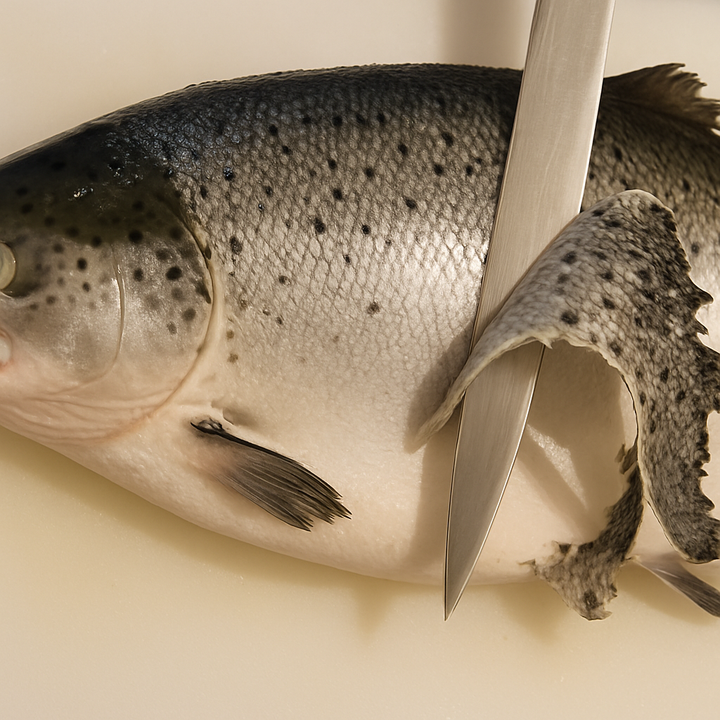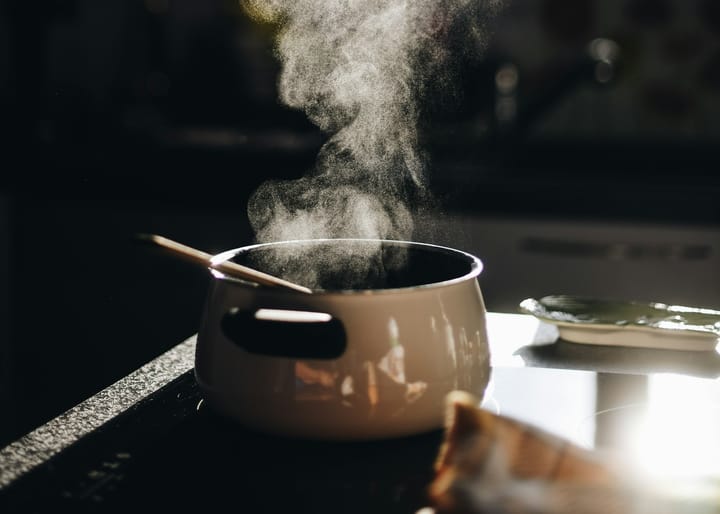Shrimp Gourmet: A Timeless Culinary Icon
Discover the delicate flavor, versatility, popular varieties, and global culinary allure of shrimp, with tips on selection, cleaning, cooking, and iconic dishes for every seafood enthusiast.

Shrimp, a beloved seafood staple, graces tables and kitchens across the globe.
Renowned for its delicate flavor, remarkable versatility, and relatively simple cooking requirements, shrimp has become a star ingredient in countless cuisines.
In this guide, we’ll dive into the fascinating world of shrimp, spotlighting seven popular varieties, identifying major shrimp-producing regions, and offering valuable tips for selecting and cleaning shrimp.
Additionally, we’ll explore diverse cooking methods, highlight iconic shrimp dishes from various cultures, and delve into the allure of premium varieties like Carabineros Shrimp and Pacific Blue Shrimp.
Whether you're a seasoned chef or an aspiring seafood enthusiast, this comprehensive shrimp guide promises something for everyone.
Seven Popular Varieties of Shrimp for Cooking
Among the more than 2,000 shrimp species inhabiting oceans and freshwater habitats, a select few dominate our plates with their culinary charm.
Let’s dive into the unique profiles of seven key shrimp varieties—Brown Shrimp, White Shrimp, Pink Shrimp, Tiger Shrimp, Rock Shrimp, Carabineros Shrimp, and Pacific Blue Shrimp—that continue to inspire cooks worldwide.
Brown Shrimp
Characterized by their warm reddish-brown hue, Brown Shrimp primarily thrive in the Gulf of Mexico and along the Atlantic coastline.
Their assertive, slightly iodine-tinged flavor makes them a standout choice for bold dishes. Averaging about 9 inches in length, these shrimp are a preferred ingredient in Creole classics like gumbo or can be grilled to perfection for a summer feast.
White Shrimp
Native to the Gulf and Atlantic coasts, White Shrimp are prized for their sweet, subtle flavor and firm texture.
Their light, nearly translucent shells when uncooked signal their freshness. With their versatility, White Shrimp can be baked, broiled, or battered, complementing a myriad of global cuisines.
Pink Shrimp
Soft pink in appearance even before cooking, Pink Shrimp hail from the western Atlantic and Gulf regions.
Known for their tender flesh and mild, sweet flavor, they are a favorite for paellas, pastas, and stir-fries. Their size and texture make them equally delightful when simply grilled with a squeeze of lemon.
Tiger Shrimp
Easily identified by their striking dark stripes, Tiger Shrimp are predominantly farmed in Asia.
Their firm, almost crunchy texture holds up well to high-heat cooking methods like grilling and stir-frying. While their flavor is mild, it’s an ideal blank canvas for absorbing bold marinades and sauces.
Rock Shrimp
Known for their hard, lobster-like shells, Rock Shrimp are harvested off the East Coast of the United States.
Beneath their rugged exterior lies tender, sweet flesh that rivals lobster in flavor. Rock Shrimp excel in dishes such as creamy pastas or when simply steamed, delivering a luxurious dining experience.
Carabineros Shrimp
Sought after for their vivid red color and rich, intense flavor, Carabineros Shrimp are a delicacy originating from the deep waters of the Eastern Atlantic and Mediterranean.
Their large size and lobster-like taste make them perfect for extravagant dishes like seafood platters, risottos, or simply grilled with olive oil and sea salt to highlight their natural sweetness.
Pacific Blue Shrimp
Native to the Pacific waters, these shrimp are celebrated for their vibrant blue shells and delicate, sweet flavor.
With a firm texture that holds up well to various cooking methods, Pacific Blue Shrimp are ideal for sautéing, steaming, or adding to seafood stews. Their striking appearance also makes them a visual delight for upscale dishes.
Major Shrimp-Producing Regions
Shrimp production is a global industry shaped by regional climates, traditions, and market demand. Here’s a closer look at the leading shrimp-producing regions and their distinctive practices.
Asia: The Epicenter of Shrimp Farming
- China: As the largest producer of farmed shrimp globally, China focuses on Whiteleg Shrimp (Litopenaeus vannamei) and Tiger Shrimp (Penaeus monodon). While most production caters to domestic consumption, a significant portion reaches international markets. Sustainability efforts are gradually improving across China's vast aquaculture sector.
- Thailand: Once a leading shrimp exporter, Thailand continues to cultivate Whiteleg Shrimp, emphasizing sustainable farming practices following challenges like Early Mortality Syndrome (EMS) in 2012. These methods ensure a reliable supply and environmental responsibility.
- Vietnam: Renowned for its Black Tiger Shrimp, Vietnam has increasingly adopted Whiteleg Shrimp farming due to its disease resistance and rapid growth. The industry features a mix of family-operated farms and large-scale operations, with growing emphasis on certifications for sustainability.
- Indonesia: Known for high-quality Black Tiger and Whiteleg Shrimp, Indonesia is a major player in shrimp aquaculture. Efforts toward certification and sustainable practices, such as mangrove restoration, underscore its commitment to balancing industry growth with ecological preservation.
The Americas: Wild-Caught and Farmed Shrimp
- United States: With a tradition of wild shrimp fishing, the U.S. harvests Brown, White, and Pink Shrimp from the Gulf of Mexico and South Atlantic waters. Strict regulations ensure the sustainability of wild populations. Meanwhile, shrimp farming, especially in southern states, is expanding with a focus on Pacific White Shrimp.
- Ecuador: A leader in Pacific White Shrimp production, Ecuador is celebrated for sustainable farming practices, including water recycling and mangrove restoration. The nation’s shrimp industry, often family-run, provides high-quality shrimp to markets worldwide while supporting local communities.
Selecting and Cleaning Shrimp
How to Select Shrimp
- Freshness: Choose shrimp that are firm to the touch and free of any ammonia smell, a clear indicator of spoilage.
- Color: Fresh shrimp should have a translucent appearance. While black spots (melanosis) may indicate age, pink or dull-colored flesh signals spoilage.
- Sustainability: Look for certifications such as "MSC-certified" or "ASC-certified," which signify responsible sourcing practices.
Cleaning Shrimp
- Deveining: Using a small knife, make a shallow cut along the back to remove the shrimp’s digestive tract. A dedicated deveining tool can simplify this process.
- Peeling: Start by removing the legs, then peel away the shell from the wide end to the tail. Leave the tail on for presentation, if desired.
- Rinsing: Rinse cleaned shrimp under cold water and pat dry with a paper towel. Removing excess moisture is essential for achieving caramelization during cooking.
Cooking Techniques for Shrimp
Shrimp’s versatility allows it to shine in a wide range of preparations:
- Grilling: Marinate or season with salt and pepper, then grill for a smoky, savory treat.
- Boiling: Perfect for shrimp cocktails or salads, boiled shrimp are tender and flavorful.
- Sautéing: Quick and flavorful, sautéed shrimp absorb the essence of butter, garlic, and herbs.
- Roasting: Spread shrimp on a baking sheet, season, and roast for even cooking and concentrated flavor.
- Frying: From tempura to Southern-style, fried shrimp offer a satisfying crunch.
- Steaming: This gentle method preserves shrimp’s natural sweetness and delicate texture.
Iconic Shrimp Dishes Around the World
- Shrimp Gumbo (Louisiana, USA): A rich stew of shrimp, okra, and Creole spices served over rice.
- Gambas al Ajillo (Spain): Shrimp sautéed in garlic-infused olive oil, chili, and dry sherry.
- Tom Yum Goong (Thailand): A hot and sour shrimp soup with aromatic herbs and spices.
- Prawn Malai Curry (India): A creamy coconut milk-based curry with marinated prawns.
- Shrimp Scampi (Italy/USA): Juicy shrimp cooked in a buttery garlic-lemon sauce, served over pasta.
- Carabineros Shrimp Platter (Mediterranean): Whole Carabineros shrimp grilled and served with olive oil, sea salt, and lemon.
- Pacific Blue Shrimp Stir-Fry (Pacific Rim): Stir-fried Pacific Blue Shrimp with colorful vegetables in a soy-based sauce.
Conclusion
From Brown Shrimp to Pacific Blue Shrimp, each variety offers distinct flavors and textures, contributing to its global appeal.
With sustainable practices becoming increasingly important, choosing responsibly sourced shrimp ensures the preservation of marine ecosystems.
Whether grilled, sautéed, or starring in an iconic dish, shrimp continues to inspire culinary creativity and delight palates worldwide. Dive into the versatile world of shrimp, and let its flavors transport you across cultures and cuisines.


